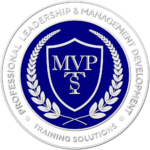A critical question emerges in leadership: Are leaders actively reaching across generational lines to draw out the best in our future leaders? This query delves into the essence of leadership and its role in nurturing the potential of the upcoming generation. With diverse perspectives and values characterizing different age groups, fostering intergenerational collaboration is not merely a choice but a strategic imperative for sustainable and effective leadership.
Leadership that transcends generational boundaries acknowledges each age group’s unique strengths and insights. Aware of the significance of varied viewpoints and experiences, progressive leaders proactively work to bridge the generational divide. By doing so, they create an inclusive environment where the collective wisdom of different age cohorts converges, fostering a more comprehensive understanding of complex issues.
One powerful way leaders can draw out the best in future leaders is through mentorship and knowledge transfer. Seasoned leaders who engage in mentoring relationships with younger counterparts pass on invaluable skills and insights and contribute to the continuity of organizational knowledge. This intentional investment in the growth and development of emerging leaders ensures a seamless transition of leadership responsibilities.
Effective leadership requires a certain level of technological fluency in today’s digital age. Forward-thinking leaders understand the importance of harnessing the digital prowess of younger generations. Organizations can capitalize on their skills and perspectives by actively involving younger leaders in technological advancements and innovation, ensuring relevance and adaptability in an ever-evolving business landscape.
Leaders committed to drawing out the best in future leaders foster an environment that encourages diversity of thought. This goes beyond age and includes embracing various cultural, educational, and professional backgrounds. Leaders can unleash their teams’ creative, innovative, and resilient potential by establishing an environment where people from diverse generations feel acknowledged and appreciated.
The effectiveness of leadership in drawing out the best in future leaders hinges on the ability to transcend generational lines. Leaders who actively bridge the generation gap, engage in mentorship, embrace technological fluency, and encourage diversity of thought create an environment where the collective strengths of diverse age groups synergize for the organization’s benefit. As we navigate an era of rapid change, leaders who prioritize intergenerational collaboration pave the way for a more resilient and innovative future.
MVPTS STAFF
